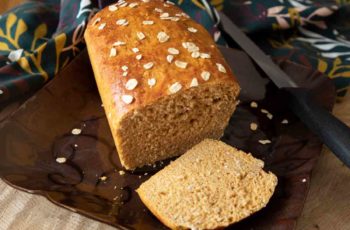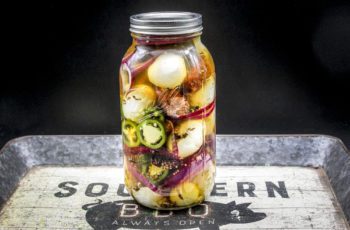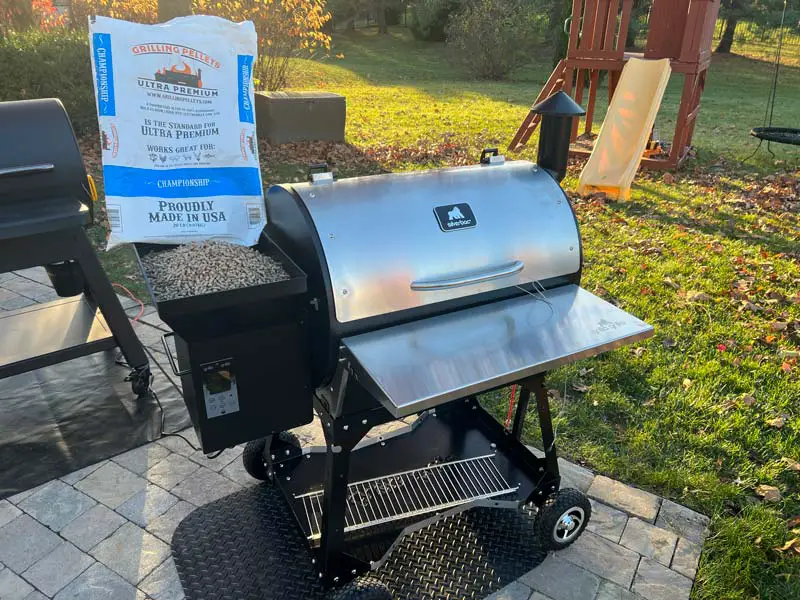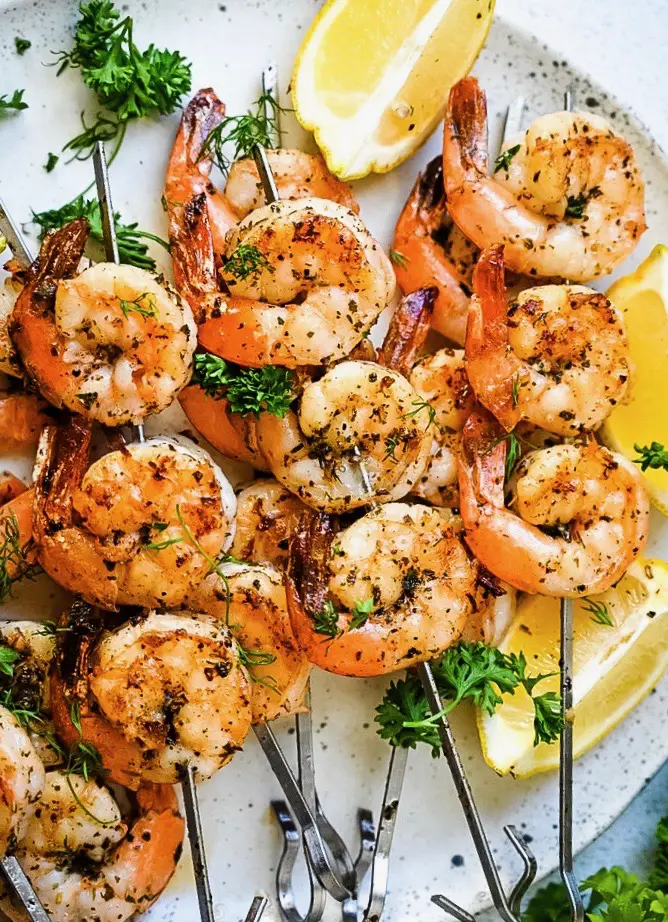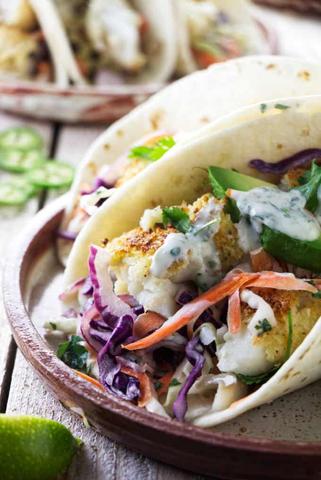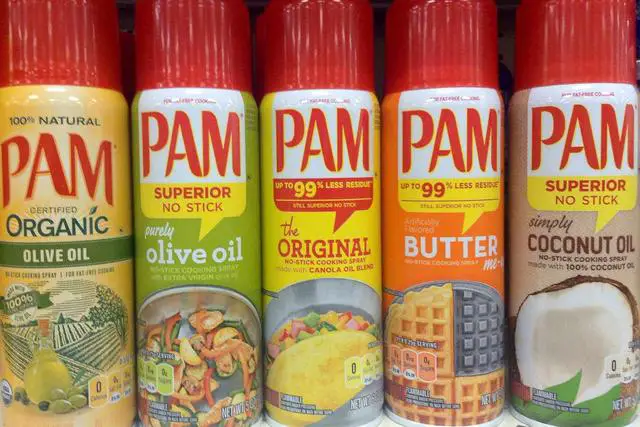
“Discover the truth about using Pam cooking spray on food: safety, flavor enhancement, and cooking convenience. Gain insights into the proper usage and potential alternatives for this popular kitchen staple. Unleash your culinary creativity with ease and confidence!”
Can You Spray Pam on Food? Is It Safe?

Yes, it is safe to spray PAM cooking spray directly on food. The contents of PAM spray are safe for consumption, as it is essentially a simple vegetable oil. Many people use PAM to enhance the taste and texture of their food by spraying it directly on ingredients before cooking or baking. However, it is still recommended to also spray the pan itself, especially when cooking items like cakes or bread that tend to stick. By using PAM or other cooking sprays, these foods can easily slide off the pan without breaking apart.
PAM cooking spray is generally considered safe for direct contact with food because it is made from vegetable oil. However, there are some situations where using PAM may not be recommended. For example, using PAM on non-stick pans can damage their coating and make them less effective over time. Additionally, spraying non-stick spray on the basket of an air fryer can also damage its coating and make it unsafe to use.
While there are no health issues associated with spraying PAM directly on food, it’s important to note that cooking sprays are highly flammable in their aerosol form. Therefore, it is crucial to only spray them before the cooking process starts and avoid spraying them during cooking. Overall, PAM cooking spray can be a convenient and useful tool in the kitchen when used correctly.
What is PAM Cooking Spray?
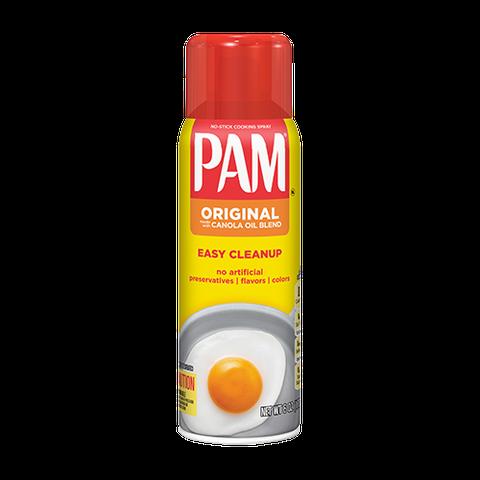
PAM Cooking Spray is a popular cooking aid that dates back to the 1950s. The name PAM is an acronym for Product of Arthur Meyerhoff, named after its inventor. It is a vegetable oil-based spray that is commonly used to prevent food from sticking to pans. While it can be sprayed directly on food, it is generally recommended to spray the pan itself for better results. PAM Cooking Spray is safe for consumption and can enhance the flavor and consistency of various foods.
Cooking spray and cooking oil have different compositions and uses. Cooking spray, such as PAM, is primarily used for its practicality in preventing food from sticking to pans. It does not significantly enhance flavor but helps maintain the consistency of baked goods. On the other hand, cooking oil, which is typically plant-based fat in liquid form, is commonly used to enhance the taste of dishes. While cooking oil has more calories than cooking spray, it adds flavor and richness to meals.
PAM Cooking Spray can be used in various ways to make cooking easier and prevent food from sticking to pans. It is recommended to spray the pan before adding ingredients, especially when baking cakes or bread. This ensures easy removal without compromising the shape of the food. Additionally, PAM can be sprayed on utensils like cheese graters or measuring cups to facilitate smoother grating or pouring sticky ingredients.
Pros:
– Prevents food from sticking to pans
– Low-fat and low-calorie alternative to butter or olive oil
– Provides an even coating for baked goods
– Can be used on utensils for smoother grating or measuring
Cons:
– Does not add much flavor to meats and vegetables
– Contains soy lecithin, which may cause issues for those with soy allergies
– Can create a crust at the bottom of baked goods, which may not always be desirable
– Not suitable for use with non-stick pans, as it can damage the non-stick coating
It is generally safe for PAM Cooking Spray to come into direct contact with food. The spray is made from vegetable oil and is safe for consumption. However, it is important to note that cooking sprays are highly flammable in spray form. Therefore, it is recommended to only spray the cooking spray before starting the cooking process and avoid spraying it during cooking. While spraying the food itself is not a problem, it is more commonly used by spraying the pan to ensure easy release of cooked food.
Can You Spray Pam Directly On Food?
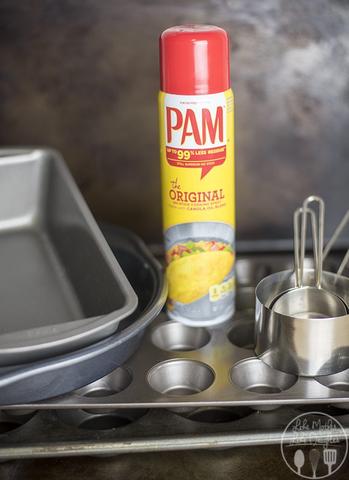
Spraying Pam cooking spray directly on food is generally safe and poses no health issues. However, it is important to note that the spray is highly flammable in its mist form, so it should only be sprayed on the food before it starts cooking. It is not recommended to spray it during the cooking process.
PAM cooking spray is more commonly used for spraying pans to prevent food from sticking. While there is nothing wrong with spraying the food itself, it is still recommended to spray the pan, especially when dealing with foods like cakes or bread that tend to stick. The spray helps in easy removal of the cooked food from the pan without breaking or sticking.
Advantages And Disadvantages Of Using Pam Cooking Spray
One advantage of using Pam cooking spray is that it provides a low-fat, low-calorie alternative to ingredients like butter or olive oil. This can be beneficial for those who are watching their calorie intake or trying to maintain a healthy diet.
Pam cooking spray also helps create an even and consistent coating for baked goods. It can prevent cakes, breads, and other baked items from sticking to the pan, making them easier to remove and resulting in a better presentation.
Another advantage of using Pam cooking spray is its versatility. It can be used on a cheese grater to facilitate smoother grating and in measuring cups to prevent sticky ingredients from clinging to the sides.
However, there are some disadvantages to using Pam cooking spray as well. One drawback is that it does not bring out much flavor in meats and vegetables due to its neutral oils. If you’re looking for a cooking method that adds flavor, using cooking oil may be a better option.
Additionally, individuals with soy allergies should avoid using most cooking sprays, including Pam, as they often contain soy lecithin as an ingredient.
An issue specific to Pam cooking spray is that it can create a crust at the bottom of baked goods. While this may not always be ideal depending on the recipe or desired outcome, it can easily be mitigated by greasing the pan with another form of fat instead.
Lastly, Pam cooking spray should not be used with non-stick pans. The use of non-stick sprays on non-stick pans can cause an invisible build-up over time, ultimately reducing the effectiveness of the non-stick coating.
Advantages
1. Little to no stickiness, and easy separation between the food and the pan.
2. Low-fat, low-calorie alternative to things like butter or olive oil.
3. Helps create an even, consistent coating for baked goods.
4. Can be used on a cheese grater for a smoother grating.
5. Can also be used in measuring cups, helpful for otherwise sticky ingredients.
Disadvantages
1. Can’t be used with non-stick pans: Using cooking spray on a non-stick pan can cause a build-up that ruins the non-stick coating over time.
2. Creates a crust at the bottom of baked goods: When using cooking spray on baking pans, it can result in a crust forming at the bottom of baked goods, which may not always be desirable.
3. Doesn’t bring out much flavor in meats and vegetables: Cooking sprays primarily consist of neutral oils, so they do not enhance the flavor of meats and vegetables like other cooking oils do.
4. Contains soy lecithin: Most cooking sprays contain soy lecithin, which can be problematic for individuals with soy allergies.
Frequently Asked Questions
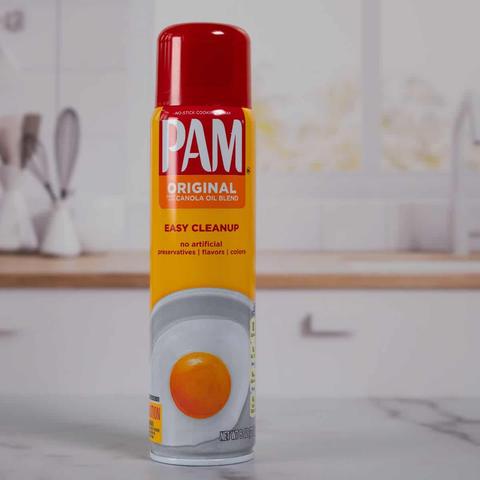
1. What is the difference between cooking spray and cooking oil?
While cooking spray is more commonly used for practicality and to prevent sticking, cooking oil is primarily used to enhance the flavor of food. Cooking spray is a vegetable oil-based product that can be sprayed onto pans or directly onto food, while cooking oil is a purified fat from a plant often seen in liquid form at room temperature.
2. Is it safe for PAM cooking spray to come into direct contact with food?
Yes, it is safe for PAM cooking spray to come into direct contact with food. The contents of PAM are safe for consumption as it is essentially a simple vegetable oil. However, it is still recommended to spray the pan itself in addition to the food, especially when dealing with sticky foods like cakes or bread.
3. Can PAM cooking spray be used on non-stick pans?
No, using PAM cooking spray on non-stick pans is not recommended. The oils in the spray can heat up and sear to such a degree that they cause damage to the non-stick coating over time. This will make the pan stickier in the long run instead of preventing sticking.
4. Are there any health concerns with using cooking sprays?
In general, there are no major health concerns associated with using cooking sprays. However, it’s important to note that cooking sprays are highly flammable in their aerosol form, so it’s crucial to avoid spraying them during the cooking process and only use them before starting to cook.
5. Can I use PAM cooking spray in an air fryer?
Spraying a non-stick spray on the basket of an air fryer is not recommended as it can damage the coating and make the pan unsafe to use. The basket of an air fryer already has a non-stick coating, so using PAM or other cooking sprays is unnecessary.
What Is The Difference Between Cooking Spray And Cooking Oil?
Cooking spray and cooking oil may seem similar, but they have some key differences in terms of their composition and uses. Cooking spray is primarily used for its practicality and ability to prevent food from sticking to pans. It is a vegetable oil in a spray form and is not typically known for enhancing flavor. On the other hand, cooking oil is purified fat from plants and is often used to enhance the taste of dishes. While cooking spray is low in calories, cooking oil contains more calories.
PAM cooking spray can be used in various ways to make cooking easier. It can be sprayed on pans before cooking to prevent food from sticking and ensure easy removal. This is particularly useful for foods like cakes or bread that tend to stick to pans. Additionally, PAM can be sprayed on measuring cups or cheese graters to create a smoother grating experience and prevent sticking. However, it should not be sprayed directly on non-stick pans or air fryer baskets as it can damage their coatings.
Using PAM cooking spray has several advantages, such as providing a low-fat and low-calorie alternative to butter or olive oil. It helps create an even coating on baked goods and prevents them from sticking to the pan. PAM can also be useful in certain kitchen tasks like grating cheese or measuring sticky ingredients. However, there are some drawbacks to consider. PAM may not add much flavor to meats or vegetables due to its neutral oils, and those with soy allergies should avoid it as most cooking sprays contain soy lecithin. It can also create a crust at the bottom of baked goods, which may not always be desired.
Spraying PAM cooking spray directly on food is generally safe. The contents of PAM are considered safe for consumption, as it is essentially a vegetable oil. However, it is still recommended to spray the pan itself, especially for foods that tend to stick. While there are no health concerns associated with spraying food with PAM, it is important to note that PAM cooking spray is more commonly used on pans rather than directly on food.
Which Of The Two Is Safer At High Temperatures?
When it comes to high temperatures, cooking spray is generally considered safer than cooking oil. Cooking oil has a lower smoke point, which means it can break down and release harmful compounds when heated to high temperatures. This can not only affect the taste of the food but also pose health risks. On the other hand, cooking spray has a higher smoke point and is less likely to break down at high temperatures. However, it’s important to note that even cooking spray should be used with caution and not sprayed directly into open flames or extremely hot surfaces.
PAM Cooking Spray offers several advantages in the kitchen. It provides a low-fat and low-calorie alternative to traditional cooking oils, making it suitable for those watching their calorie intake. It also helps create an even and consistent coating on baked goods, preventing them from sticking to the pan. Additionally, PAM can be used on cheese graters and measuring cups to make grating and measuring sticky ingredients easier.
However, there are some downsides to using PAM Cooking Spray. It does not bring out much flavor in meats and vegetables due to its neutral oils. It can also create a crust at the bottom of baked goods, which may not always be desired. Furthermore, most cooking sprays contain soy lecithin, so individuals with soy allergies should avoid using them.
Cooking spray and cooking oil have different compositions and uses in the kitchen. Cooking spray is primarily used for its practicality in preventing food from sticking to pans or other surfaces during cooking. It typically contains vegetable oil as its main ingredient and is known for its ability to enhance consistency rather than flavor.
On the other hand, cooking oil is used more frequently to enhance the taste of food. It is typically a purified fat from a plant and is commonly seen in liquid form at room temperature. Cooking oil adds flavor and richness to dishes, making it a popular choice for sautéing, frying, and salad dressings.
The recommended way to use PAM Cooking Spray is by spraying it onto the pan rather than directly onto the food. This helps prevent sticking and ensures an even coating on the surface. However, if you prefer to spray the food itself, it is generally safe as long as it is done before cooking. Avoid spraying cooking spray during the cooking process, as it can be highly flammable in spray form.
It’s important to note that using PAM Cooking Spray on non-stick pans or in an air fryer is not advisable. It can damage the non-stick coating and make the pan unsafe to use. Additionally, using cooking sprays directly on non-stick pans can cause an invisible build-up that ruins their non-stick properties over time.
Can You Use Cooking Spray On An Air Fryer?
Using cooking spray on the basket of an air fryer is known to damage its coating. This can make the pan unsafe to use, so it’s important to be mindful of this. The basket of an air fryer already has a non-stick coating, so using cooking spray is not necessary anyway. However, spraying the food directly before placing it in the air fryer isn’t seen as a big cause for concern.
Can You Use Cooking Spray On A Non-Stick Pan?
Using cooking spray on a non-stick pan is generally not recommended. Non-stick pans already have a coating that prevents food from sticking, so using cooking spray can actually damage the non-stick surface over time. The oils in the spray can create a build-up and cause the pan to become less effective at preventing sticking. It’s best to avoid using cooking spray on non-stick pans and rely on the non-stick coating instead for easy food release.
Conclusion

In conclusion, PAM cooking spray offers several advantages and disadvantages. It is a low-fat, low-calorie alternative to butter or olive oil and can help create an even coating for baked goods. It can also be used on a cheese grater or in measuring cups to prevent sticking. However, it does not add much flavor to meats and vegetables due to its neutral oils. Additionally, those with soy allergies should avoid cooking sprays that contain soy lecithin. It is important to note that PAM cooking spray should not be used with non-stick pans as it can cause damage to the pan’s coating. Overall, while there are some drawbacks and limitations, PAM cooking spray can be a useful tool in the kitchen when used appropriately.
In conclusion, it is safe to use cooking spray, such as Pam, on food as long as it is used in moderation and according to the product’s instructions. However, it is important to be mindful of potential health concerns associated with certain ingredients in cooking sprays. It is always best to opt for healthier alternatives like olive oil or butter whenever possible.
Learn More About Grilling
If you want to learn more about grilling, check out these other helpful resources!

